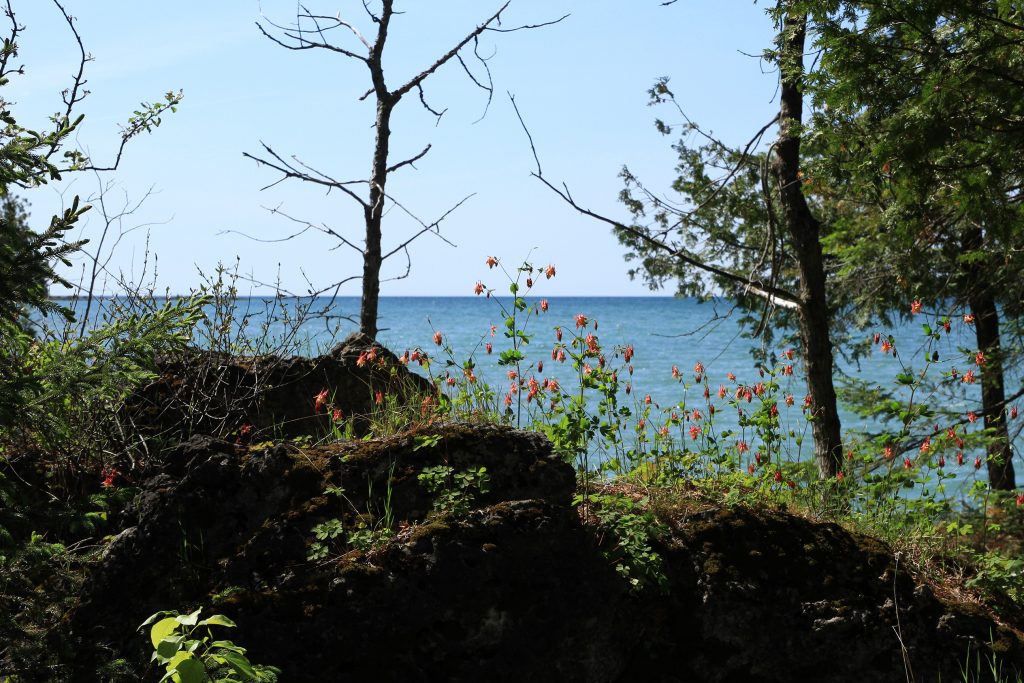As one drives along the Lake Huron shoreline, heading east out of Cedarville on highway 134, one begins to notice a fair amount of rock. This rock is likely a type of limestone known as dolomite or dolostone. Dolomite is a magnesium-rich form of limestone and in the eastern Upper Peninsula it appears as exposed bedrock. Especially along the shoreline where there are huge boulders and plates of bedrock exposed. While there are large bare areas that may be covered in lichens, some organic matter does collect in depressions and crevasses allowing for plants to grow. As impressive as this harsh environment is for plants to survive, the real area of amazement and awe is to the east on a large rock known as Drummond Island.
While Drummond Island is an area of diverse and interesting natural habitats and features, the one that draws me the most is the alvar known as Maxton Plains. Alvar is only found in three areas of the world with the Upper Peninsula being one of them. Being one of the most popular four-wheel drive destinations in the United States, people bring jeeps and other four-wheel drive vehicles from all over the country to off road on this big rock. But as they drive through this flat rock area, raising clouds of dust as they pass, do they realize all the resilient and rare plants that they pass by? In these flat areas that look like pavement, you will find large open areas which appear to be barren except for some lichens. But look more closely. With top soil at 10 inches or less and many areas much less, there is an amazing world of smaller or even stunted plants. Rock Sandwort and Early Saxifrage seem to rise from the rock. Creeping Junipers seem to reach their tentacle like limbs from a central spot which may be a crack in the rock allowing them to put roots down in search of moisture and nutrients. Some of the low grassy areas on this bed rock may harbor rare and threatened species like the Small Skullcap, a small blue flower I found purely by accident.
As you move away from the barren areas of exposed rock to the areas with a little more soil or organic matter, you will find large flat open areas of grasses and sedges. The time of year will dictate the color and intensity of the show from the forbes growing there. Sone areas this past week when I was there where yellow with Ragwort and Indian Paint Brush which tends to be more yellow and orange than red on the island. Some drier sites where pink with the feathery seed plumes of Prairie Smoke, another threatened species.
How can these plants persist in such a harsh environment? Many are either unique to the island or are also found in dry prairies in other parts of the state. There is an inundation of water in spring or after rains that sustain the drought tolerant plants. Others are in areas closer to the forest where the topography may drop off slightly and hold water longer and these areas may have more soil. All of these conditions make for a tremendous diversity in such a small area.
Next time you are in the eastern UP or on Drummond Island, take an hour or two or three and explore the flat plains, you won’t be disappointed. If you are four-wheeling, take a break and spend a little time out of the vehicle here rather than just stopping long enough to read the interpretive sign if you stop at all.
Be sure to click on the title at the beginning of this entry to see the full photo collection of one afternoon in the Maxton Plains.
 Click on the title of a post to view a full gallery of images.
Click on the title of a post to view a full gallery of images.



